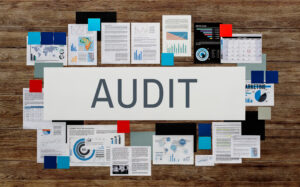ISO 22000 Certification: How It Helps Improve Food Safety Management
Introduction
ISO 22000 certification is a valuable tool for organizations in the food industry to enhance their food safety management systems (FSMS). With rising consumer demand for food safety, ISO 22000 provides a comprehensive framework for identifying, managing, and reducing food safety risks. This article explores how ISO 22000 certification helps organizations improve food safety, streamline operations, and meet regulatory requirements.
Table of Contents
What is ISO 22000 Certification?
ISO 22000 certification is a globally recognized standard that ensures an organization's food safety management system meets the required criteria. It involves the establishment, implementation, and continual improvement of processes to control food safety hazards. Organizations that achieve ISO 22000 certification demonstrate their commitment to producing safe food products and reducing risks associated with foodborne illnesses.
For more details on ISO 22000 certification, visit our ISO 22000 Lead Auditor Training page.
How ISO 22000 Improves Food Safety
ISO 22000 helps organizations systematically manage food safety risks by providing a clear framework for identifying hazards and implementing control measures. Some of the key improvements include:
- Hazard Control: ISO 22000 helps organizations identify and control food safety hazards, including biological, chemical, and physical hazards.
- Systematic Approach: The standard provides a structured approach to managing food safety, from initial risk assessment through to continuous improvement.
- Prevention of Foodborne Illnesses: By controlling food safety risks, ISO 22000 helps prevent foodborne illnesses, ensuring safer food for consumers.
Implementing ISO 22000 helps ensure that food safety is embedded throughout the organization, not just in individual departments. Visit our ISO 22000 Lead Auditor Training page for more information.
Risk Management and ISO 22000
One of the key benefits of ISO 22000 certification is its emphasis on effective risk management. The standard provides organizations with the tools to:
- Identify and assess food safety risks: ISO 22000 requires organizations to assess the risks that could impact food safety, ensuring that hazards are identified early in the food production process.
- Control and monitor risks: With ISO 22000, organizations can establish control measures and continuously monitor their food safety performance.
- Minimize risk exposure: By proactively addressing food safety risks, organizations can minimize exposure to legal liabilities, reputational damage, and public health risks.
By integrating these risk management practices, ISO 22000 enables organizations to effectively safeguard food safety at every stage of the supply chain. For further details, refer to the ISO 22000 Lead Auditor Training page.
Improving Operational Efficiency with ISO 22000
In addition to improving food safety, ISO 22000 certification can lead to significant improvements in operational efficiency. By implementing a standardized food safety management system, organizations can:
- Streamline processes: ISO 22000 encourages the standardization of food safety processes, reducing redundancy and increasing operational efficiency.
- Enhance resource management: With better control over food safety risks, organizations can allocate resources more efficiently and effectively.
- Reduce costs: By minimizing food safety failures and risks, organizations can reduce costs associated with recalls, litigation, and waste.
ISO 22000 helps organizations focus on improving food safety while maintaining a balance with operational goals. Visit our ISO 22000 Lead Auditor Training page to learn more.
The Certification Process
The process of achieving ISO 22000 certification typically involves the following steps:
- Initial Assessment: Review current food safety management processes to identify gaps and areas of improvement.
- Implementation: Establish and implement the necessary controls, policies, and procedures as per ISO 22000 standards.
- Internal Audits: Conduct internal audits to assess the effectiveness of the FSMS and identify areas for improvement.
- Certification Audit: A third-party audit is conducted to verify that the FSMS meets ISO 22000 requirements. Upon successful audit, certification is awarded.
To begin the certification process, explore our ISO 22000 Lead Auditor Training page.
Frequently Asked Questions (FAQ)
How long does it take to get ISO 22000 certified?
The certification process typically takes a few months to complete, depending on the size of your organization and the complexity of your existing food safety management system.
What is the cost of ISO 22000 certification?
The cost varies based on the scope of your FSMS and the size of your organization. For an accurate estimate, please contact QMII directly.



